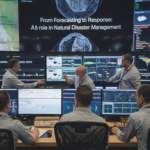Artificial intelligence (AI) has rapidly evolved in recent years, introducing powerful techniques that transform industries, reshape how we live, and challenge our perceptions of technology’s role in society. Among these techniques, “Deep AI”—often used interchangeably with deep learning—has gained attention for its ability to make predictions, generate complex content, and improve systems in ways that were unimaginable just a decade ago. This article explores what Deep AI is, how it works, its applications, and the ethical considerations accompanying its expansion.
What is Deep AI?
Deep AI, also called deep learning, is a subset of machine learning that uses neural networks with multiple layers to analyze vast amounts of data. Unlike traditional AI systems, which require explicit programming for specific tasks, deep AI can autonomously learn patterns and make decisions based on data input. Inspired by the human brain’s architecture, deep neural networks (DNNs) consist of layers of interconnected nodes (or “neurons”) that process information in ways that mimic human cognition.
At its core, Deep AI relies on algorithms that can learn from data by adjusting the “weights” of connections between neurons, which enhances the system’s ability to recognize patterns, classify data, and make predictions. The more layers and data a neural network has, the “deeper” the AI becomes, hence the term “deep learning.” Deep learning models excel in analyzing large, complex datasets, which is why Deep AI powers many of today’s most advanced applications, from self-driving cars to natural language processing.
How Deep AI Works: The Technology Behind the Magic
Deep AI utilizes artificial neural networks with multiple hidden layers between the input and output layers, which gives the model its “depth.” The layers process data sequentially, with each layer learning to recognize certain features or patterns based on the previous layer’s output. Here’s a basic breakdown of how Deep AI operates:
Input Layer: The data, which can be images, text, audio, or any other type of information, enters the neural network through the input layer. Each neuron in this layer represents an individual feature of the input data.
Hidden Layers: These intermediate layers consist of neurons that perform complex calculations. Each hidden layer refines the data, extracting increasingly abstract features as the data moves deeper into the network. For example, in image recognition, early layers may identify edges, while deeper layers detect shapes, textures, and objects.
Output Layer: The processed information reaches the output layer, where the network makes a prediction or classification based on the learned patterns. For instance, an image classification model might output labels like “cat” or “dog” depending on the detected features.
Backpropagation and Training: Using a process called backpropagation, the network adjusts its internal parameters (weights and biases) after each training round to reduce errors. The model continues training until it achieves an acceptable level of accuracy.
The effectiveness of deep AI largely depends on the quality of data and the number of layers within the neural network. Models with more layers generally capture more intricate details but require significant computational resources and larger datasets.
Applications of Deep AI
Deep AI has demonstrated transformative potential across a broad spectrum of applications, including:
Computer Vision: Deep AI is crucial for tasks like image recognition, object detection, and facial recognition. In the medical field, deep learning assists doctors by analyzing X-rays and MRIs to detect diseases like cancer, often with remarkable accuracy.
Natural Language Processing (NLP): From chatbots and translation services to sentiment analysis, Deep AI enables systems to understand and generate human language. NLP models like GPT (Generative Pre-trained Transformer) and BERT (Bidirectional Encoder Representations from Transformers) are examples of deep learning applied in language processing.
Autonomous Vehicles: Deep AI powers self-driving cars, where it processes sensor data in real-time to recognize objects, navigate routes, and make quick decisions to ensure safety.
Generative AI: Models like DALL-E and Stable Diffusion use deep learning to create images, music, and text, opening new possibilities in art, design, and entertainment.
Healthcare Diagnostics: Deep AI is used in developing predictive models for health conditions, analyzing patient data, and providing personalized treatment plans, contributing to more accurate and efficient healthcare.
Ethical and Practical Challenges of Deep AI
As Deep AI becomes more advanced and widely applied, several ethical and practical challenges arise. Here are some key considerations:
Data Privacy: Deep AI models require vast amounts of data, which often includes sensitive personal information. Ensuring data privacy and protecting against misuse of personal data is a critical concern.
Bias and Fairness: AI models trained on biased data may reinforce or amplify social inequalities. Researchers are actively working on fairness algorithms, but eliminating bias remains challenging, particularly in systems used for hiring, criminal justice, and finance.
Transparency: Deep AI models, especially deep neural networks, are often seen as “black boxes” due to their complexity. This opacity raises concerns in areas like healthcare or law, where explainability and accountability are essential.
Job Displacement: The efficiency and automation capabilities of deep AI could potentially replace jobs in sectors like manufacturing, customer service, and even data analysis, leading to economic and social shifts.
Autonomy and Control: The more advanced Deep AI becomes, the more difficult it is to control. Autonomous systems, such as drones or self-driving cars, pose risks if they malfunction or are manipulated. Ensuring safe, reliable operation is a top priority as these technologies evolve.
The Future of Deep AI
The potential of Deep AI is enormous, and research is advancing rapidly. Scientists are now exploring “artificial general intelligence” (AGI), which aims for AI systems that can perform any intellectual task a human can. While true AGI is likely years, if not decades, away, incremental improvements in deep AI continue to push the boundaries of what machines can achieve.
In the coming years, deep AI may lead to breakthroughs in quantum computing, climate modeling, and advanced robotics, as well as foster new business models and social structures. However, realizing its full potential will require thoughtful regulation, ethical guidelines, and public awareness.
Deep AI has opened the doors to a future where machines can analyze, predict, and even create with a level of sophistication that rivals human cognition. Its applications are already changing industries and redefining our everyday lives. Yet, as we embrace this powerful technology, we must remain vigilant about its risks and ethical implications. With responsible development, Deep AI holds the promise of solving some of humanity’s most pressing problems, ushering in a new era of innovation, productivity, and discovery.








